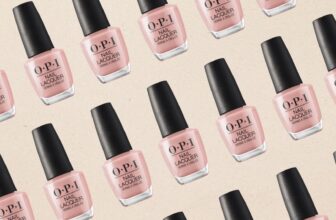Beauty is Pain: Lessons and Trends Impacting the Beauty Industry and Employment Law Concerns for 2025 and Beyond | Buchalter
It was a normal, busy day at Young’s Nail Spa in Temecula, California, when the nail salon was abruptly hit with a $1.2 million fine by the California Labor Commissioner after an investigation found that 36 workers were misclassified and improperly paid. In New York City, a nail salon chain with 25 locations was ordered to pay $300,000 to more than 100 current and former employees due to misclassification issues. Lady Jane’s Haircuts for Men was sued in a class action in a federal court in Michigan for misclassifying its hair stylists as independent contractors and violating the Fair Labor and Standards Act. These cases are not anomalies. Beauty salons across the country are at an increased risk of lawsuits as more claims targeting the unconventional employment model are made and plaintiffs’ attorneys become hungry to target this industry.
California Assembly Bill (AB5)
AB5, which became effective on January 1, 2020, is the law governing how California businesses can classify workers as independent contractors. This landmark law has brought radical changes to many industries across the state, including the beauty industry, and makes it harder for a worker to be legally classified as an independent contractor. AB5 codifies the “ABC” test established by the California Supreme Court in Dynamex Operations West, Inc. v. Superior Court of Los Angeles. Under this test, it is illegal to classify a hair stylist in a beauty salon as an independent contractor unless the salon can prove all of the following:
- The stylist is free from the beauty salon’s control and direction;
- The stylist performs work that is outside of the salon’s usual business; and
- The stylist typically operates his or her own business, separate from the salon.
It would be nearly impossible for a hair salon to prove the second element, namely that the hair stylist’s job of cutting or styling hair is not part of the salon’s usual business. Therefore under this test, California hair stylists would be misclassified as independent contractors. Fortunately, for now, AB5 includes a “Professional Services” carve-out exempting certain professions, including licensed barbers and cosmetologists, provided that the individual: (i) sets their own rates, processes their own payments, and is paid directly by clients; (ii) sets their own hours of work and has sole discretion to decide the number of clients and which clients for whom they will provide services; (iii) has their own book of business and schedules their own appointments; (iv) maintains their own business license for the services offered to clients; and (v) if the individual is performing services at the location of the hiring entity, then the individual issues a Form 1099 to the salon or business owner from which they rent their business space.
Even if this exemption applies however, beauty salons are not out of the woods as they still have to meet the test under the old independent contractor analysis provided by the California Supreme Court in S.G. Borello & Sons, Inc. v. Department of Industrial Relations.
Borello Test
The Borello test is currently applicable to beauty salons. This test relies on multiple factors to determine whether a hair stylist is properly classified as an independent contractor, including whether the salon has all necessary control over the manner and means of accomplishing the result desired, although such control does not need to be direct, actually exercised, or detailed. This non-dispositive factor is to be considered along with other factors, including:
- Whether the stylist holds him or herself out as being engaged in an occupation or business distinct from that of the salon;
- Whether the stylist’s work is a regular or integral part of the salon’s business;
- Whether the stylist or salon supplies the instrumentalities, tools, and place for the stylist to work;
- Whether the stylist has invested in the salon, such as the equipment or materials required for the stylist to perform the work;
- Whether the service provided requires a special skill;
- The stylist’s opportunity for profit or loss depending on managerial skill;
- The length of time for which the services are to be performed;
- The degree of permanence of the working relationship;
- The method of payment, whether by time or by the job;
- Whether the stylist has employees;
- Whether the salon has a right to fire at will or whether a termination gives rise to a breach of contract; and
- Whether or not the stylist and salon believe they are creating an employer-employee relationship.
Courts analyze these factors on a case-by-case basis, and no single factor controls the determination. Courts have emphasized different factors depending on the analysis at hand. For example, where the employer does not control the work, an employer-employee relationship may still be found if the employer retains control over the business as a whole, the worker’s job is integral to the business, and the nature of the work makes detailed control unnecessary. (Yellow Cab Cooperative, Inc. v. Workers’ Compensation Appeals Board (1991) 226 Cal.App.3d 1288.)
Manicurists are Employees Beginning on January 1, 2025
When AB5 was passed, manicurists were provided a temporary exemption, which was originally set to expire in 2022, while other similar professionals (such as hair stylists) were provided a permanent exemption. On September 30, 2021, Assembly Bill 1561 was signed into law, extending the manicurists’ carve-out from AB5 until January 1, 2025. However, no further extensions have been granted. Therefore, AB5’s legal exemption for licensed manicurists will become inoperable. This means that California will no longer allow nail salons to have independent contractors or “booth renters” in their salons and those manicurists will now be classified as employees. As employees, manicurists will now be entitled to the legal protections of the Labor Code, including minimum and overtime wages and meal and rest breaks. Nail salons will also be required to maintain workers’ compensation and withhold payroll taxes. Failure of nail salons to implement these changes by January 1, 2025 will expose them to regulatory fines and costly litigation.
While it appears that only manicurists will no longer be exempt from AB5, it is only a matter of time that legal challenges will be made to also argue that other similar workers should be classified as employees—licensed estheticians, barbers, and cosmetologists.
Best Practices for Hair Salons
For decades, hair salons have been extremely fortunate in generally avoiding scrutiny of their relationship with their workers. However, given the unprecedented change regarding manicurists, hair salons will no longer be able to fly under the radar and it is only a matter of time that we will be seeing many misclassification claims to jeopardize the independent contractor model.
Salons wishing to keep their workers as independent contractors must carefully audit and examine their agreements with their workers to ensure that they meet all of the applicable legal requirements. Salons must also exercise due care and diligence to make sure that the independent contractor or “booth rental” agreements are actually adhered to in practice, to minimize exposure to misclassification claims.







